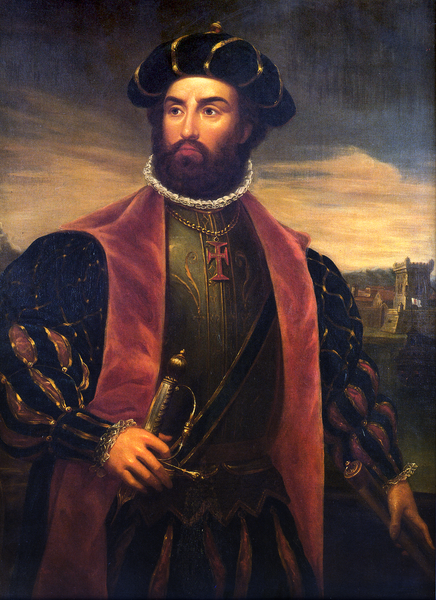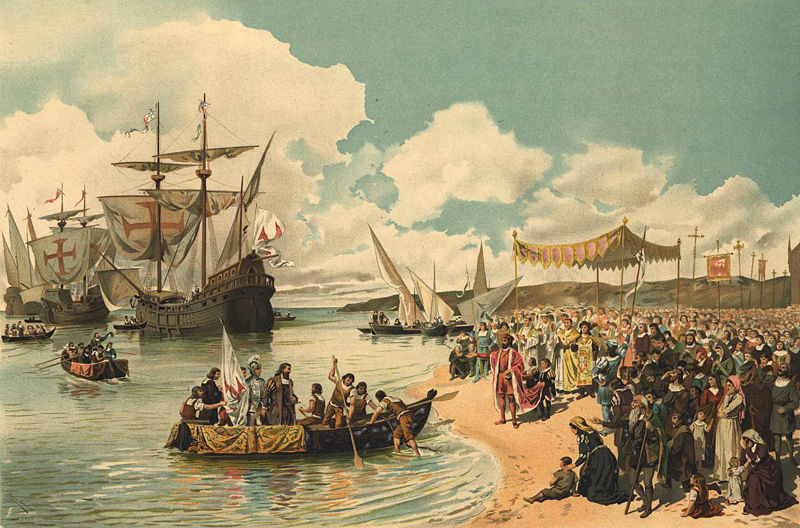At Belém they were all kneeling at his side: Paulo da Gama, his brother, with Nicolau Coelho and Gonçalo Nunes, his other captains and their pilots, Pero de Alenquer, João de Coimbra, Pero Escolar, Afonso Gonçalves; and likewise the “secretaries” Diogo Dias, João de Sá and Álvaro de Braga. Bartolomeu Dias was also there, for his caravel was to leave with the fleet on its way to the castle of St. George. Their eyes were fixed on the standard hanging before the altar to receive the protection of the Holy Virgin Mary and her divine son. As they prayed, they laid their pride, their fears and their hopes at the feet of her whose name means in Hebrew “Star of the Sea.”

Statue of Our Lady of Belém over the South Portal entrance to Jerónimos Monastery where Vasco da Gama spent the night praying before leaving for India.
The glass in the windows lightened, and the flames of the candles grew yellow. A religious of the Order of Christ, one of those brought by King Henry from the convent at Tomar to be ever ready to administer the sacraments to departing sailors, mounted the altar and celebrated the divine sacrifice. Gama and all his captains, officers and pilots took Communion….
That July 8, 1497, was a feast consecrated to the Virgin. As the capitão-mor and his companions left the chapel, they paused for a moment, dazzled by the sight of the immense throng which even at that early hour covered the strand….
From all the neighboring parishes and nearby convents and monasteries, priests and religious had gathered in great numbers to join those of the Order of Christ and add their prayers to those just uttered before the altar of Our Lady of Belém…. The priests chanted the litany of the saints:
Kyrie, eleison!
Christe, eleison!
Kyrie, eleison!
Christe, audi nos!
Christe, exaudi nos!
“Miserere nobis!” cried the throng, responding to the invocations.
Gilbert Renault, The Caravels of Christ, trans. Richmond Hill (New York: G. P. Putnam’s Sons, 1959), 157-8.
Short Stories on Honor, Chivalry, and the World of Nobility—no. 520










